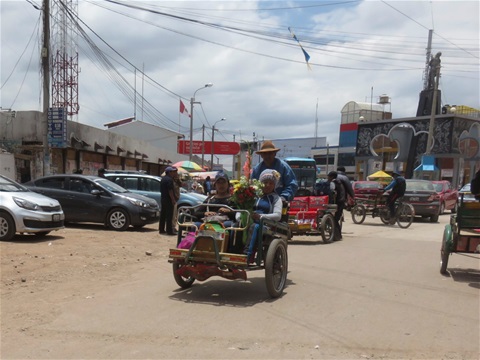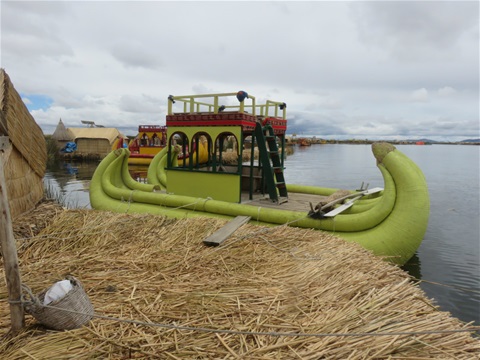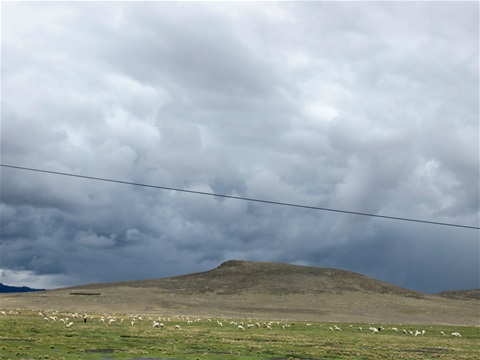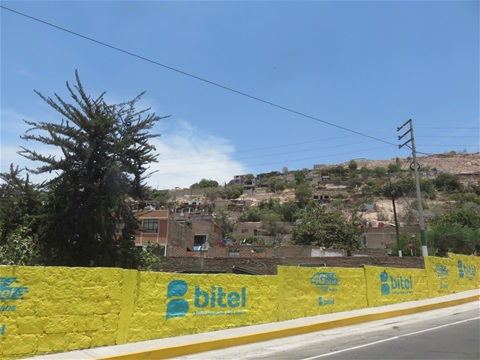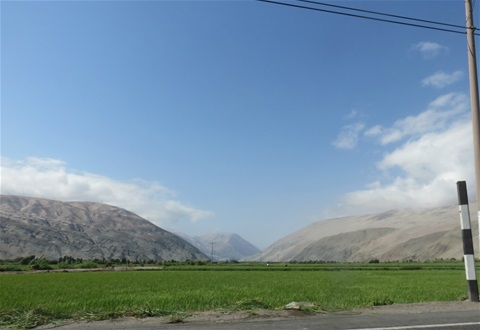31.12.16 Puno, Peru to Tiwanaku, Bolivia
We left Puno in the chilliness of the morning, and followed the road as it hugged it’s way around Lake Titicaca.
As we rode closer to the Bolivian border, there was a slight change to the houses, and the dress of the locals. We began to see alot more bowler hats, and long black ponchos. Apparently the bowler hats were introduced to the Andes back in the 1800’s, and the ladies of the area adopted them with gusto.
They are very beautiful, with round faces, ruddy brown cheeks, long dark hair tied in plaits, all of a similar length to each other, and adorned with pom poms, or flowers at the ends. The little bowlers are worn very high on the head (as I demonstrated for you in yesterday’s photos). The skirts these ladies wear are ruched or pleated at the top, with a lot of petticoats underneath to add wideness, and the jackets, or waistcoats are bright pinks, yellows, greens. Just looking makes you smile.
The border was a very busy looking place, but in fact was pretty straightforward. There were just a lot of people selling their fruits, drinks, nik naks, and all dotted throughout the roads. Apparently Friday is market day on the Peruvian and Bolivian side of the crossing, and it is so busy you can barely find your way through to the migration offices. We had wondered how busy it would be today being New Years Eve, but it was a fairly straightforward 2 hours. Whilst I waited for Paul to queue, I had a lot of people coming by for a chat, with curious questions or wanting photographs, so that passed the time quickly. We have changed time zone and are now only 4 hours behind the UK.
Our ride the other side was just 25 miles to a hotel in a tiny town. As we rode along the temperature dropped sigificantly to 6 degrees celsius. Although we are still at the other end of Lake Titicaca the mountains here are quite high, causing some fog, dampness and cold.
We appear to be the only one’s staying here tonight at Hotel Akanapa, it’s good value and clean, what more can we ask.
